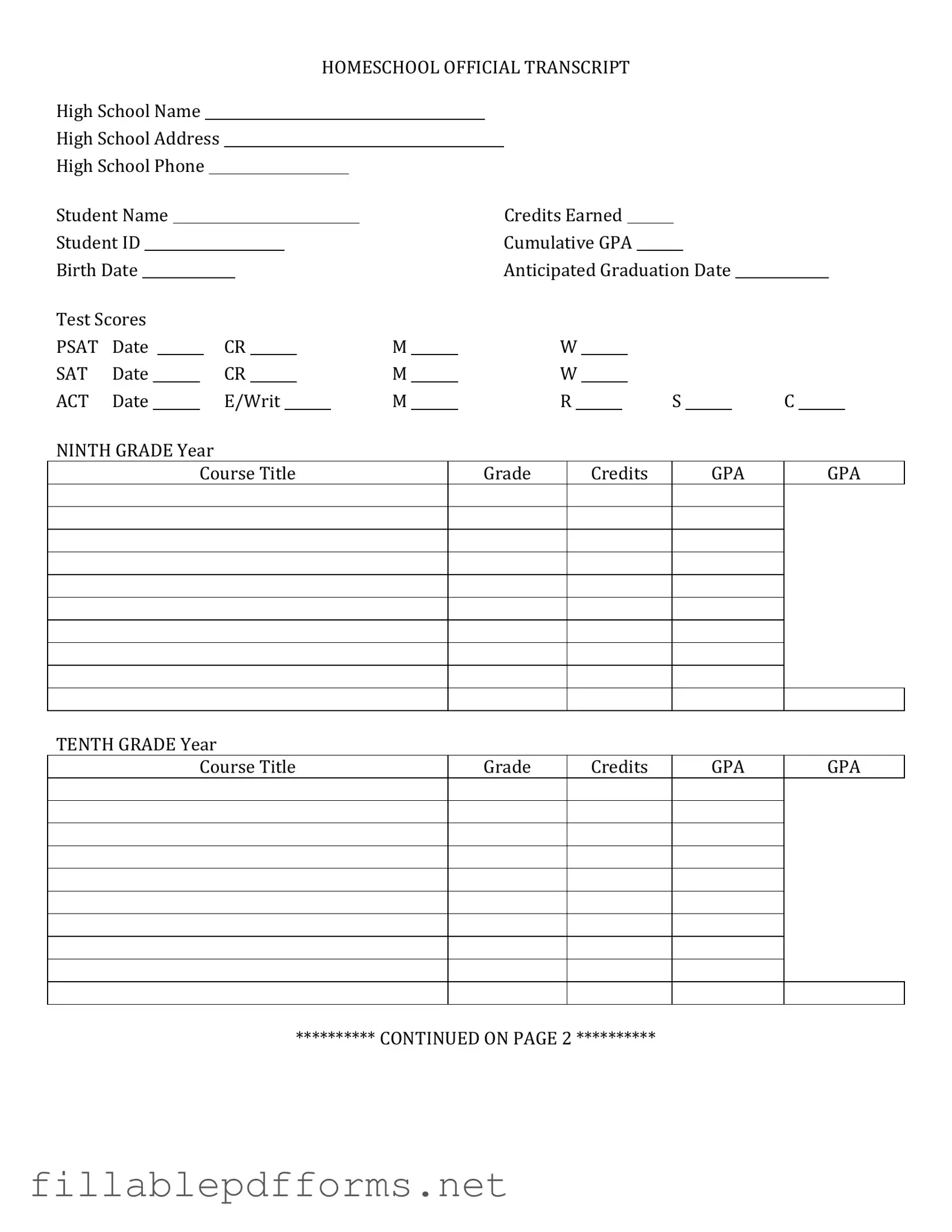High School Transcript PDF Template
The High School Transcript form is an official document that provides a comprehensive record of a student's academic achievements during their high school years. It typically includes details such as courses taken, grades earned, and credits awarded. This form plays a crucial role in college admissions and job applications, serving as a key indicator of a student's educational background.
Launch Editor Here
